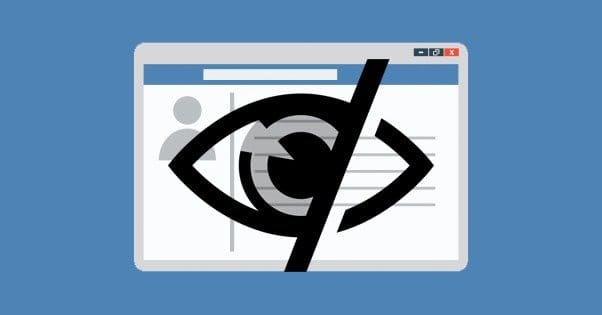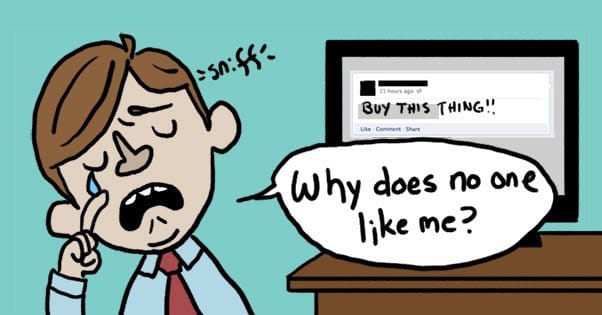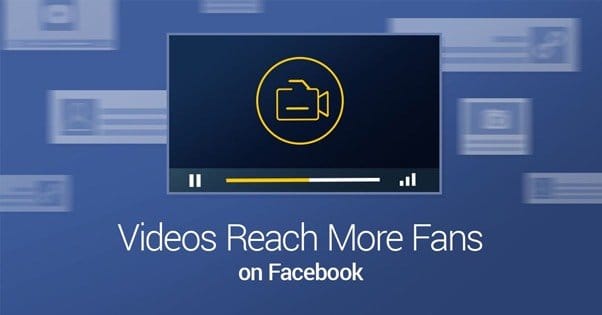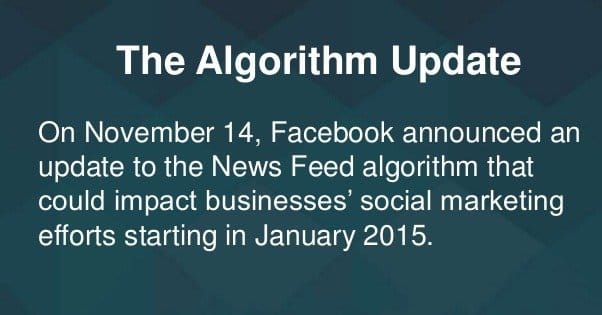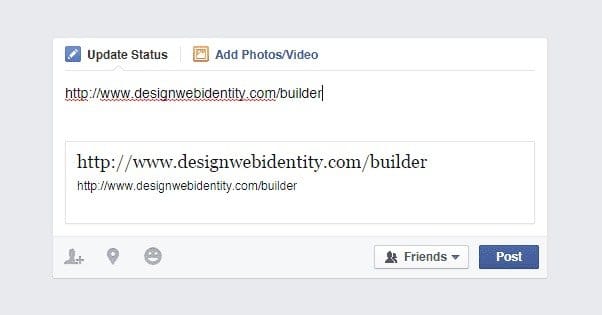 Written by ContentPowered.com
Written by ContentPowered.comOn Facebook, reach is an important metric, but it’s also a metric that is very frustrating to monitor. Sometimes it seems like no matter what you do, it’s always dropping. You fight and you struggle, you implement a dozen different successful strategies to boost it, and yet the best you manage is a bump in the downward trend, or maybe a holding pattern.
What’s going on? Are you doing something wrong, or is Facebook dying?
Understanding Reach
There are three types of reach on Facebook. These fall under the headings of organic reach, paid reach, and viral reach.
Organic reach is the first and most default type of reach. When you make a post on Facebook, people who follow you see it. That’s organic reach. Of course, it’s not actually a measure of how many people consciously notice, read, or engage with the post. You need to monitor other metrics, like clicks and engagement, to get a sense of that.
Paid reach is, obviously enough, the same sort of deal but with promoted posts and boosted posts. When you pay money to turn a post into an ad, anyone who sees it because it was a promoted post counts under paid reach rather than organic reach. A promoted post can still gain organic reach, though, unless it was a dark post. In that case, only the paid viewers add up.
A dark post, by the way, is a post that is not published to your feed. Organic viewers can’t see it, only viewers who are part of the paid target audience. This is very useful for split testing ads, among other things.
Viral reach is a little different. Both organic and paid reach are posts you make and are seen by people who follow you. This is one degree of separation from your page. What happens if one of those posts is shared, or a user comments? Other people on that user’s feed will see the post, either via the share or a story generated when they commented. This is a second degree of separation from you. Anyone who sees your post because of a second degree connection – or third, or fourth, or more – counts as viral reach.
This is an important distinction to learn. That’s because Facebook sort of caps organic reach, and paid reach is limited by the budget you’re willing to spend and the size of your target audience. Viral reach, though, is potentially unlimited. It’s the kind of reach that sites like Buzzfeed and Upworthy thrive on abusing.
So, when you say your reach is dropping, make sure you’re paying attention to the right kind of reach. There are all kinds of reasons why your reach might be dropping, and it depends on what type of reach you’re looking at.
Understanding Feed Filtering
There’s one more factor that goes into reach that isn’t explained by just the reach definitions themselves, and that’s feed filtering. It’s implied when you read between the lines about what reach is, but I’ll make it explicit.
Facebook estimates that the average user follows enough pages and has enough friends that they would, under unfiltered circumstances, see around 1,500 or more posts every day. That’s a heck of a lot of posts. You would have to be reading 3-4 posts per minute, every minute, for eight straight hours, to cover that. Of course, if it was unfiltered like Twitter, you would see time-based surges. Most of the posts you want to see would be clustered around peak hours, and would be even more impossible to keep up with.
Facebook, thus, filters their news feeds. Users typically only see around 300 posts per day, chosen from the greater pool by a set of algorithms that calculation your relationship with all of the other people you’re networking with online. That’s what EdgeRank is all about.
Quickly; EdgeRank is the algorithm that applies to each post, as a calculation of the relationship between the poster and the user. A brand with 100 followers sharing one post would have 100 different EdgeRank calculations for organic reach, plus more for whoever could see it virally.
The point is, most users miss 4/5ths of the content that they might otherwise see if their feeds were unfiltered. There’s no way to see everything short of going in and turning on notifications for literally everyone you network with, page or profile, and checking them religiously.
So you have a post that needs to make it through the EdgeRank filter to be seen, at which point it becomes a +1 to reach. There, it needs to capture the attention of the reader, rather than be glossed over. It needs to be something they want to click on or respond to, otherwise you get no engagement out of it. It’s a lot of filters in the way of communication.
Let’s take a look at possible reasons why your reach is dropping. Some of them are errors on your part, some of them are glitches or changes on the part of Facebook, and some are just things that happen. Hopefully, the reason yours is dropping is something you can fix.
Your Promoted Posts Expired
This is an error with reading reporting on your reach, and not realizing the situation. If you’ve noticed your reach is dropping, but you’re only considering total reach, your organic reach might be just fine. The reach that dropped was your paid reach, which makes sense since you stopped paying for it. If you start promoting more posts, your reach will be right back up to where it was, or better if you’re targeting a better audience or putting more money into your budget.
A New Competitor Appeared
The number one reason for declining reach on Facebook is the feed filter, and the feed filter exists because of the number of posts flying back and forth on the service at all times. Everyone posting is competing for the attention of the people who read their posts, or can if they’re visible. If a new competitor pops up – or if your audience starts following someone else – your reach will drop due to a lower chance of your posts making it through EdgeRank and the filter to get to their eyeballs.
Your Post Quality Dropped
This is an easy downward spiral to fall into. You’re making good posts but your reach is dropping. The value of posting goes down, so you put less time and energy into your posts, so they drop in quality. The drop in quality means fewer people are engaged, which lowers your EdgeRank rating with them, which makes them less likely to be seeing your posts in the first place. It’s hard to make the investment necessary to pull out of the spiral, and usually involves hiring a marketing firm for the purpose.
Your Post Frequency Dropped
One of the primary ranking factors in EdgeRank is how recently you made a given post. More recent posts can show up over less recent posts, even if the less recent posts are more popular and valuable. Time decay is very important. By letting your page go idle, your EdgeRank rating with people drops, so when you try to come back, your posts will struggle. To avoid struggling, you need to post frequently and consistently.
People Stopped Engaging
Engagement is another good and powerful factor in EdgeRank. When people like, comment, or share a post, they increase their affinity with your brand. This makes them more likely to see your posts in the future. Conversely, the less they pay attention to your posts, the less they will see more posts in the future. If you make a few bad posts in a row, people who were formerly engaged will stop engaging, and thus will stop seeing your posts.
Facebook Removed Bot, Spam, and Dead Accounts
On the surface, it might seem like Facebook removing invalid accounts would boost your reach, right? If you have 1,000 followers and Facebook removes 100 of them, and your reach is 60 people – the standard 6% — that 60 is a higher proportion of the 900 people left after the removal.
This is inaccurate, however. Reach just deals in raw numbers, and it tends to suit a percentage as a baseline. Reach would rise if it was a flat number, but it’s not. When bad accounts are removed, it’s possible that some of those accounts were seeing your posts, which means some of your reach is gone as well.
You’re Relying on Singular Post Types
Certain types of posts have more weight in EdgeRank than others. Text posts and no-preview links are at the bottom. Higher up are links with previews, and pictures, and videos. It can be very tempting to exclusively use the top tier post type, because it has the best base value. However, doing that will wear out the value of that post type for you. What you should be doing is varying your post types over time, so you hit more bases more often.
You’re Not Using Video
This sort of goes hand in hand with the previous reason; video is being very highly pushed by Facebook right now. They want their video marketing to surpass even YouTube, and while the volume of people using it due to the size of Facebook itself is high, YouTube still has far more creators. Still, with Facebook pushing video heavily, a good video can dominate in reach. You just can’t post nothing but videos, because that will wear them out with your followers.
You’re Missing the Connection with Fans You Need
This is more a flaw with your editorial calendar and with your analytics monitoring. Fans like some kinds of content and not others. Moreover, they understand what your brand is and what it represents. They expect certain types of content out of you, and anything else will cause dissonance. Rarely this dissonance can help you, but most of the time it’s just going to drive people away. Figure out what your fans like and expect, and provide that instead.
Facebook Made a Change in Reach-Affecting Code
Sometimes Facebook makes changes to the way the platform works, or the way their algorithm works. One of the recent changes was the large-scale removal of many of the generated stories. When a user likes a post, it used to generate a story about that post in their friends’ feeds. The same goes for commenting. Now, these stories are much rarer, because the friends involved couldn’t really interact with them. They were just in the way. Unfortunately, this is a decline in reach you simply need to eat and hope for the best.
Facebook Made a Change in Reach Reporting
This has happened before as well. Facebook may change how their Insights platform reports data, in a way you need to adjust for. The example I linked is from a time when they accidentally counted the same person twice, once for organic and once for paid reach. That’s not really valid double views, because the user seeing it twice isn’t as important as two users seeing it once. Be careful to watch for Facebook announcements when your reach drops, mostly when it drops suddenly.
Your Link Posts Have No Preview
By default, when you post a link on Facebook, the site reaches for meta data to determine what content to show in a preview. Typically this will be the page’s meta title, meta description, and a preview image taken from a small selection. You can, on your site, customize all of this using open graph tags. On Facebook, you can click to edit any part of it. You can also remove the preview.
No preview, or a preview that looks like trash, are both bad for your reach. Spend the time necessary to customize a high quality preview and you’ll get a lot more attention out of the news feed, and thus a higher reach as people engage more.
You’re Focusing on Text Posts
Again, different types of posts perform differently. Text posts – posts with no links, images, or special content – are weighted the least. When used sparingly by your page, they can be quite effective at drawing attention. If used all the time, though, you don’t have much going for you. Mix up the type of content you post and try to minimize the number of posts you make with no additional content. If you need to, post announcements on your site and link to them, or put the text over an image to post that instead.
You Change Your Privacy Settings
This is an interesting side effect of privacy on Facebook. It’s not really about your reach being low according to Insights, but rather a low reach based on what you can see. If you have a post that gets 50 shares, but you go to click on it and see 15 shares, there’s something wrong. Typically, that’s your privacy settings. Take a look for a “Some posts may not appear” message in gray. That message means the people who shared your post have privacy settings limiting who can see their posts, and you’re not on the list. Even though it’s your post, you can’t see it, so Facebook won’t show you the share.
Your Posts Were Reported or Flagged
When a post is reported, that user stops seeing your posts, and sometimes it will rebound to other users. Enough reports and Facebook may suspend the post until you verify it isn’t what they claim it to be, or will remove it entirely. These are detrimental effects and hurt your reach, obviously. Even false reports can occasionally hurt you, though the automated systems aren’t really very good at handling either the reports or the fallout.
You Lost an Influential Follower
If a lot of your reach came from viral reach, and your reach is dropping, you might want to check your shares. It’s possible that you had one very potent influencer sharing your posts, whose audience then saw it in a fit of viral reach. If that influencer has stopped sharing your posts, or something has happened to their business or audience, it’s possible that your reach has dropped a corresponding amount. This isn’t something you can fix, but you can certainly try to hook more influencers to get more action.
You’re Checking Reach Too Soon
This is another flaw in reporting. If you’ve always checked your reach reports 10 days after the post was made, you’ll have 10 days worth of interactions to boost them. If you then start checking 7 days after the post is made, or 5 days after, or what have you, you’re giving your posts less time to rack up engagement and reach. Less time means less reach, so your numbers will be lower.
Make sure you’re not just making a simple mistake with analytics.
